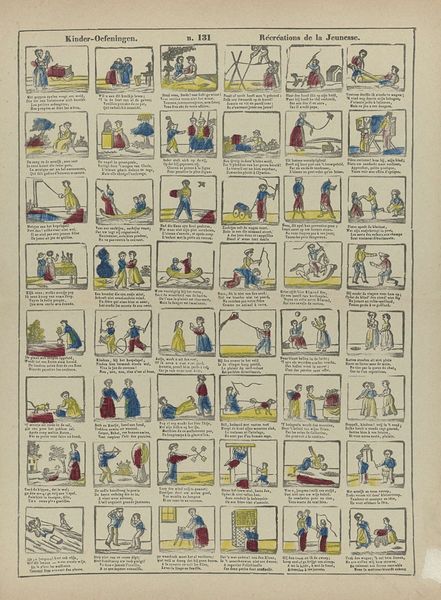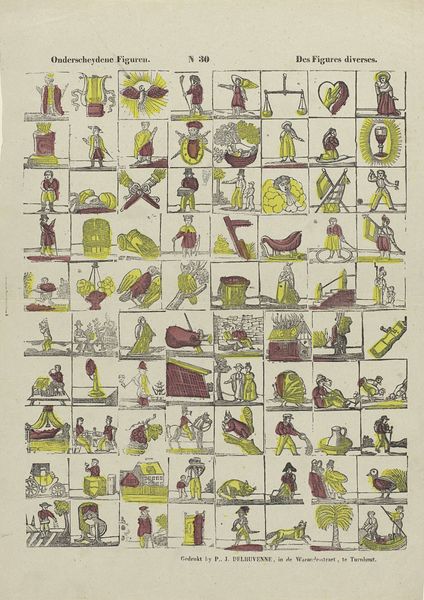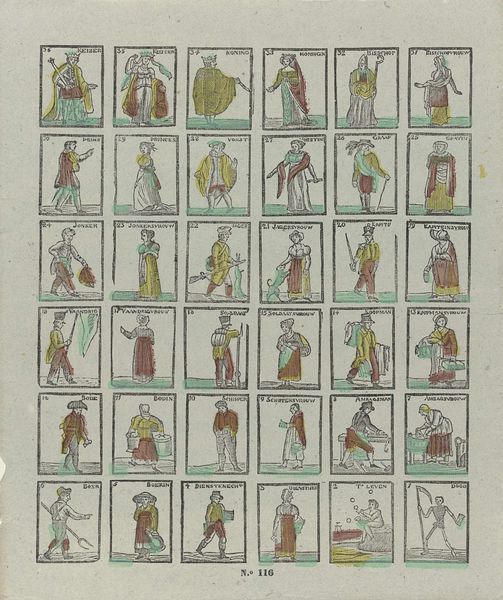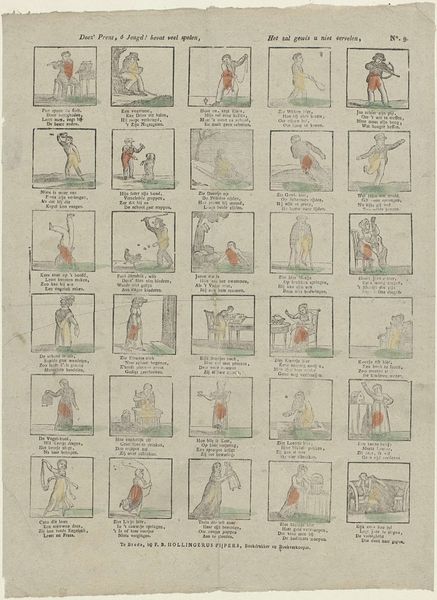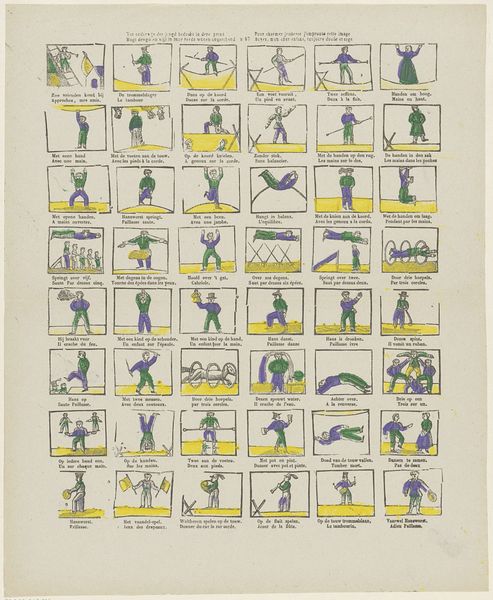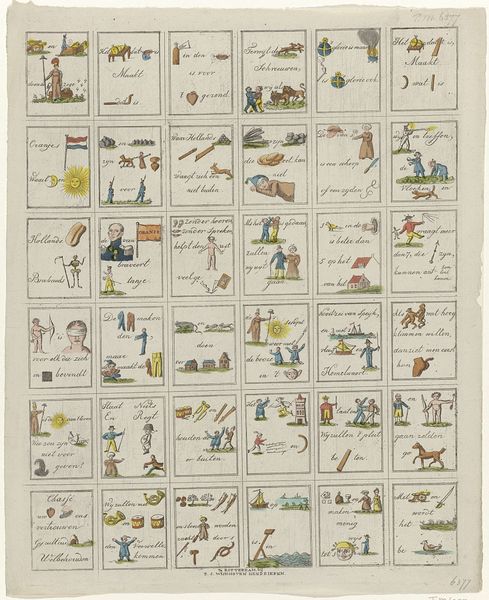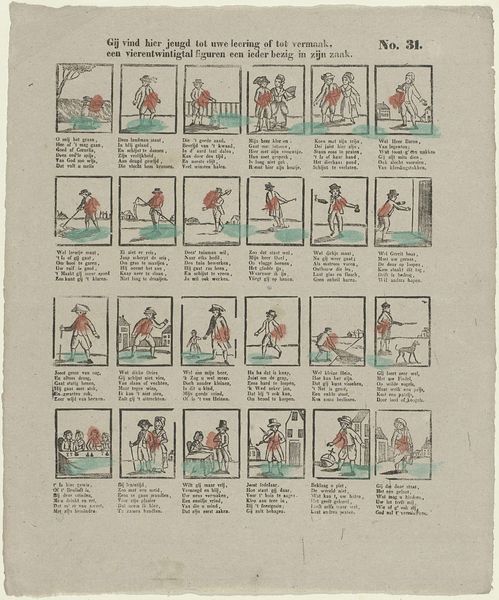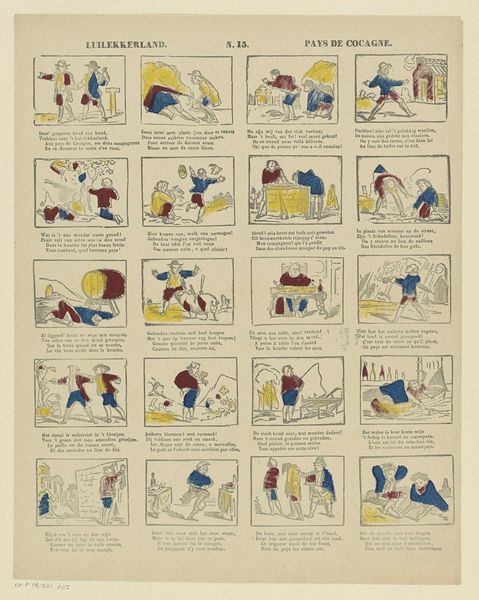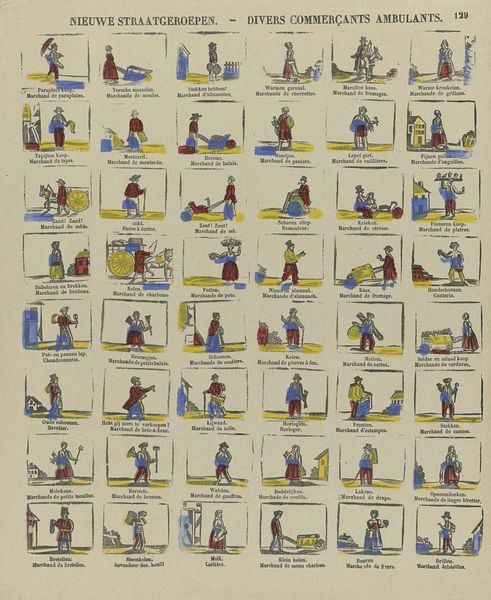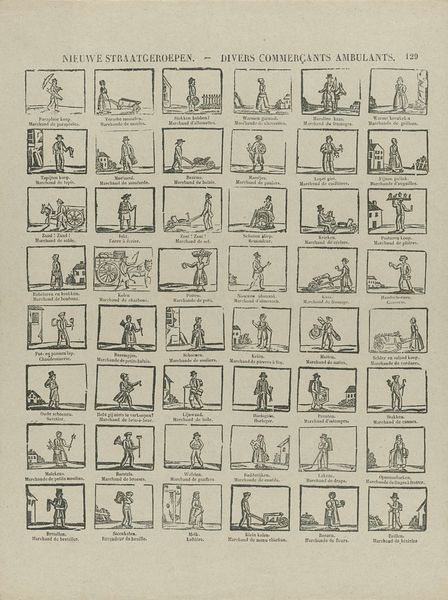
Tot onderwijs der jeugd bedacht ik deze prent, / Moog' deugd en vlijt in haar steeds wonen ongekrenkt / Pour charmer la jeunesse j'emprunte cette image, / Soyez, mon cher enfant, toujours docile et sage 1800 - 1833
0:00
0:00
print, etching, paper, engraving
#
aged paper
#
narrative-art
# print
#
etching
#
figuration
#
paper
#
line
#
genre-painting
#
history-painting
#
academic-art
#
engraving
Dimensions: height 376 mm, width 304 mm
Copyright: Rijks Museum: Open Domain
Editor: This print, titled "Tot onderwijs der jeugd bedacht ik deze prent...", which translates to something like "For the education of youth I devised this print...", was made by Philippus Jacobus Brepols between 1800 and 1833 using etching and engraving techniques on paper. It has this almost comic-book style layout to it. How do you interpret this work? Curator: What stands out to me is the interplay between labor and leisure depicted in this piece, and how it reflects the evolving social context of the early 19th century. Each small image shows figures engaging in various activities, what seems to be work as much as play, right? Editor: Yes, I see that. There's a person on stilts, people balancing on ropes...even scenes that look like hard labor in fields, or performing labor such as spinning? Curator: Exactly. Consider the production process of this print itself: etching and engraving were labor-intensive practices. The choice to depict children at 'play' and in training reflects societal values regarding work ethic and leisure. It really blurs the lines by representing activities with implied pedagogical lessons. Editor: So, the materiality of the print – the paper, the ink, the techniques used to create it – are actually fundamental to understanding its message? Curator: Absolutely. The accessibility of prints allowed for wider distribution of these messages about the ideal childhood and industriousness, shaping societal norms about youth and production. Can you read any of the Dutch verses? Editor: Only some of the text - looks like many actions depicted in the images appear named under them in either French or Dutch. Thank you for explaining all this; it’s fascinating to consider the art this way! Curator: My pleasure. It’s by considering both what it depicts and what *enabled* its existence that we can draw so many meanings from such seemingly simple work.
Comments
No comments
Be the first to comment and join the conversation on the ultimate creative platform.

